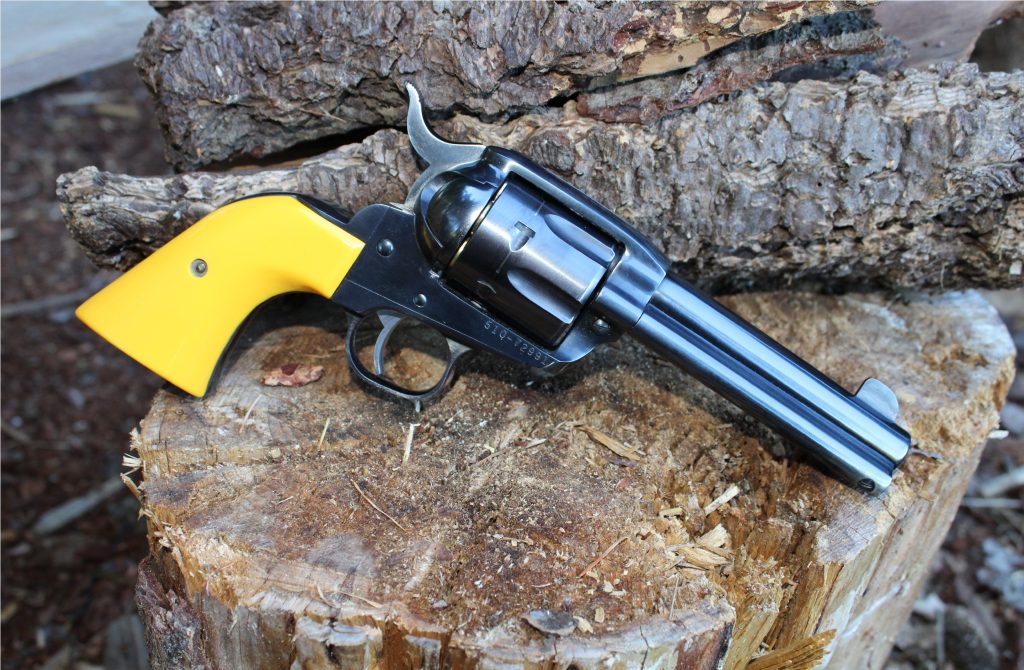
By Dave Workman |Editor-in-Chief
When the .45 Colt (not the “.45 Long Colt”) made its debut as a black powder cartridge back in 1873, one might presume the developers really didn’t know what they had.
It has taken more than century for the full potential of this marvelous handgun cartridge to be realized. Not only is it a fight-stopper—as western graveyards underscore—it is a game-taking round that may be under-appreciated by some folks. With the right loads, this cartridge will take down deer and elk-sized game, sending a great big slow-moving bullet with a large frontal mass into a target and knocking something down for the count.
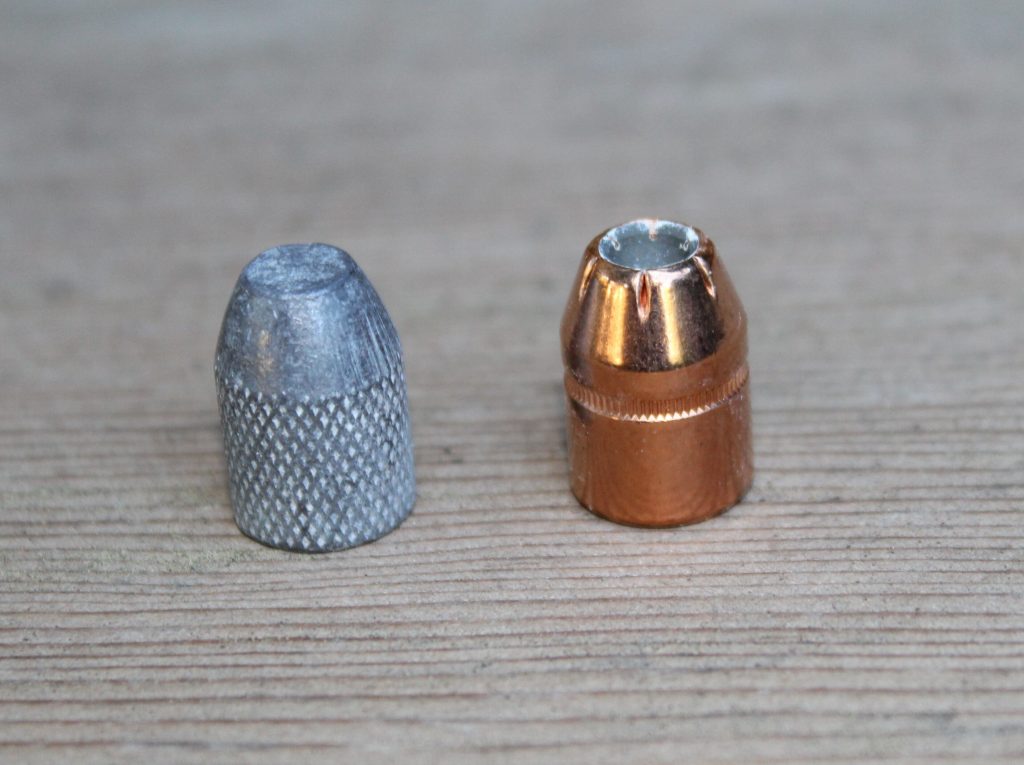
Many
years ago, I started advocating for Ruger or some other manufacturer to bring
out a single-action revolver built as a facsimile to the famous “Sheriff’s
Model” with its 3 ½ -inch barrel as a concealed carry model. This one did not
have an ejection rod, but today’s short-barreled models seem primarily to have
the ejection rod and housing in the traditional position on the lower right of
the barrel.
Sure, there are other potent rounds out there, but the .45 Colt cannot be
dismissed as passé.
When Ruger first introduced the New Vaquero, they offered it with a 7 ½-inch barrel and a color case frame, and I quickly pounced. I tested one and it shot so well I bought it. I’ve carried that sixgun afield on occasion, knowing that the round would stop anything I encountered in the field, on either four or two legs.
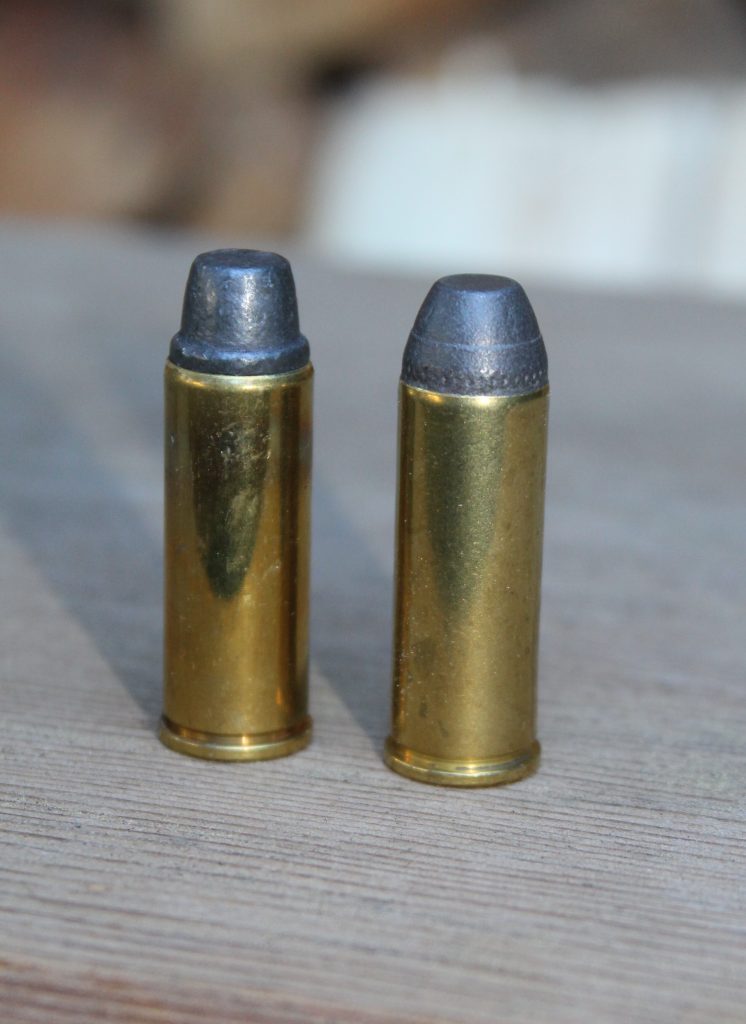
While it began life as a black powder load, with today’s propellants, the .45 Colt is a pretty decent round with comparable stopping power as the .45 ACP.
I’ve loaded with several different projectiles, including the 250-grain Hornady XTP (0.452-in.) jacketed hollowpoint, and various lead pills to include the 250-grain Speer lead semi-wadcutter (LSWC/0.452), a 250-grain lead round nose flat point (LRNFP) and Hornady’s slightly-heavier 255-grain LRNFP (0.454-in.). The latter, in my humble opinion, is a marvelous bullet for either cowboy loads or full-house field work.
One bullet I have yet to try is the Nosler 250-grain JHP. I use 210-grain Nosler JHPs in my .41 Magnum loads, and this larger pill (.451-in.) should be a dandy when used with Nosler data.
The .45 Colt case measures 1.285-inch, and it is, by handgun cartridge standards, cavernous. It will hold lots of powder, so be careful about throwing a double-charge.
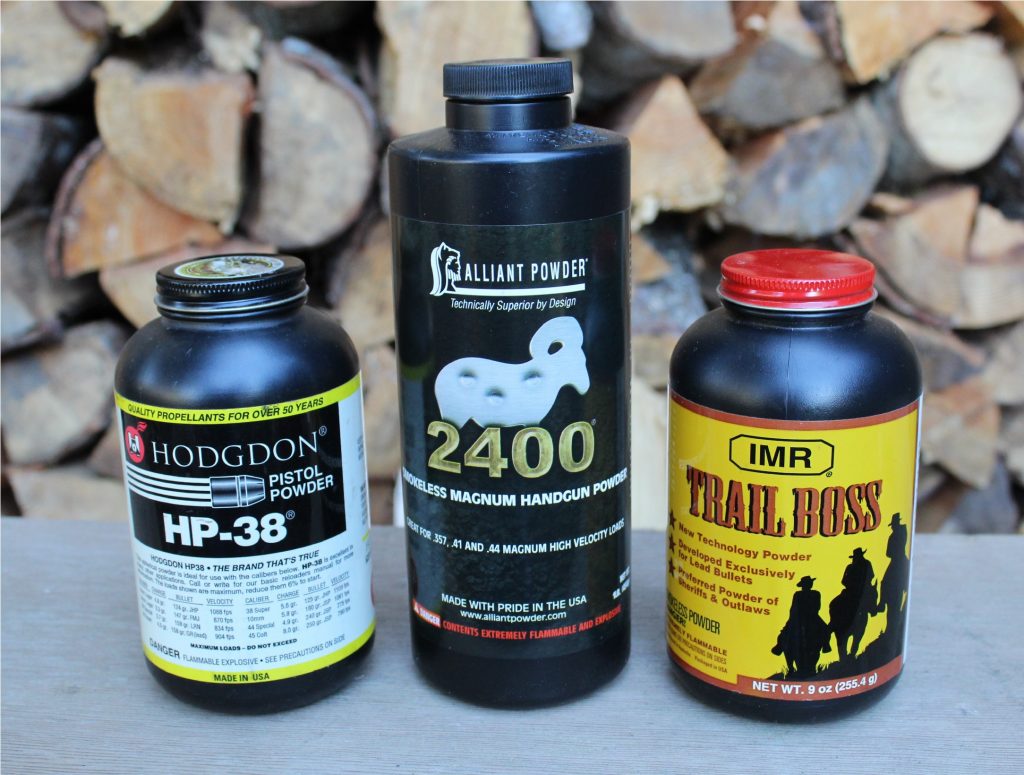
I load with a standard large pistol primer, either CCI 300 or Winchester. I’ve experimented with such propellants as HP38, CFE Pistol, AutoComp, Alliant 2400 and IMR Trail Boss, the latter developed, I suspect, for the Cowboy Action crowd, but I’ve found that a charge of 5.8 grains of that donut-shaped propellant can launch a 250-grain Speer lead bullet at about 700 fps out of my 7 ½-inch New Vaquero, which is plenty to put the hurt on a rabbit, coyote, grouse (if necessary) or some other small game.
I should throw in this caveat: Your results may vary, depending upon the particular handgun. And don’t get creative. While these loads are within listed data, if you notice signs of excessive pressure, back off! I’ve never seen that in a .45 Colt load in my handguns, but I’ve seen other ammunition in different calibers that showed no pressure signs in one gun, but did when fired from a different gun (i.e. flattened primers, cracked cases).
Using the same LSWC 250-grain Speer bullet, I’ve been able to send it out of my other Ruger New Vaquero, with a 4 5/8-inch barrel, at just under 900 fps using 15-grains of Aliant 2400, which is a fairly stout load, though not the maximum (15.4 grains) listed in the Speer loading manual. (The recommended starting load with that bullet and 2400 powder is 13.4 grains. NOTE: Speer Reloading Manual #14 says the test gun was a Colt SAA with a 5.5-inch barrel.)
However, I get a little better horsepower with a 250 grain cast LRNFP bullet using 8.5 grains of CFE Pistol (not the maximum listed in Hodgdon’s Annual Manual for that propellant).
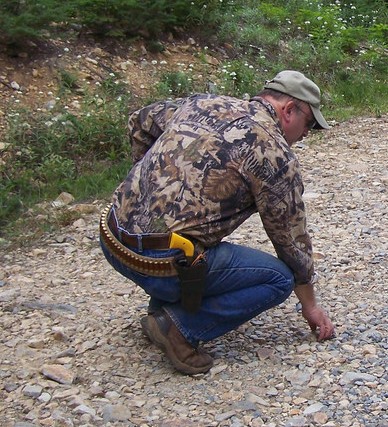
I’ll get maybe 25-40 fps more velocity out of the longer barrel.
I don’t recommend maximum loads listed in any manual for use in a Colt Single Action Army, any of the imported facsimiles or the New Vaquero unless you work up to them, while I would not hesitate to use them in a stout sixgun such as the Ruger Blackhawk or original Vaquero, or the Thompson/Center single shots.
All of that said, my pet load for both of my .45 Colt-caliber sixguns is 6.9 grains of HP38 behind the 255-grain Hornady LRNFP, which has proven itself to be accurate beyond 50 yards, and is the maximum load listed for that powder and bullet in the Hornady manual. I worked up to that, of course. Within 50 yards, I’ve managed to hit tin cans rather consistently, so if some rabbit is dumb enough to hold still long enough for me to get a good sight picture, I’m having cottontail for supper!
There are lighter bullets available for .45 Colt loads that can launch at better than 1,000 fps according to data in the Hodgdon Annual Manual.
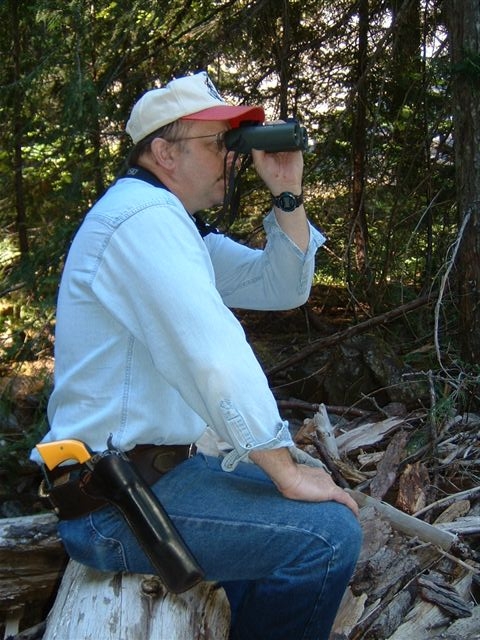
As noted earlier, be extremely careful about loads for traditional Colt SAA, Ruger New Vaquero and similar sixguns. Don’t try to power up with loads developed for the Blackhawk or T/C Encore or Contender.
There’s something about being afield with a good single-action revolver, and both of my Rugers, with their modern internal mechanism, can be safely loaded with six rounds. I’ve found both wheelguns to be reliably accurate even with their factory fixed sights (traditional rear notch and fixed blade front), and I would not hesitate to rely on either gun or my handloads in an emergency.
Always consult reliable loading manuals before working up your own handloads. Maximum loads listed should be approached with caution and never be exceeded!



